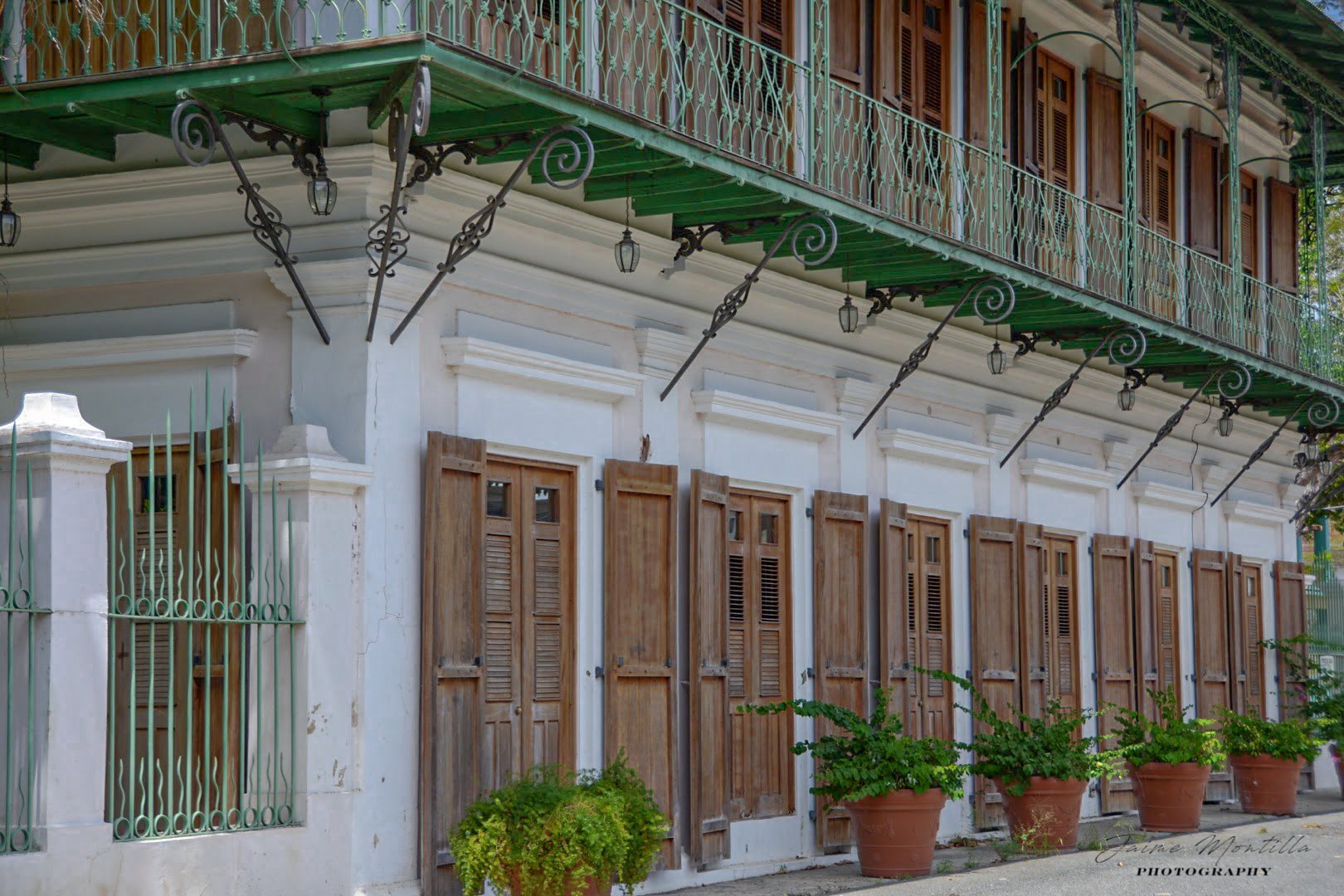
Hacienda Santa Rita
Hacienda Santa Rita was established in the early 1800s in Barrio Guanica then of San Germán, in a sector called "Ojo de Agua" because of a nearby spring. Its original owner was Miguel Quiñones de Miraval (1735-1810) and his second wife Maria Ursula Nazario de Figueroa y Martinez de Matos (1751-1841).
The hacienda was initially developed by Felipe de la Cruz Quiñones Quiñones (1758-1839) son of Andrés Quiñones Ortiz de la Renta and Antonia Martínez de Quiñones Ortiz de la Renta. Felipe married Juana Martinez de Andino Ferrer and in 1798 married a second time his cousin Ana Petrona Quiñones Nazario de Figueroa, daughter of Miguel and Maria Ursula. In 1809, after the death of Ana Petrona, Felipe married his sister-in-law Maria Ana (Mariana) Quiñones Nazario de Figueroa. The hacienda takes the name after Felipe and Mariana's daughter Rita Quiñones Quiñones.
In 1866, at 57 years of age, José Maria Quiñones Quiñones (1809-1895), the son of Felipe and Mariana, married his cousin Filomena Quiñones Silva (1831-1921) daughter of Ramón Quiñones Quiñones owner of Hacienda Coto where she was born. Filomena was the widow of José Maria's brother Juan Nepomuceno (1812-1854) who she had married in 1851. It was José Maria who made Hacienda Santa Rita the largest in the area. In 1849, Hacienda Santa Rita consisted of 893 cuerdas and was valued at 300,000 pesos and by 1871 it consisted of nineteen different parcels of land totalling 1,800 cuerdas.
By 1890 Jose Maria was heavily indebted to Tomas Garrosi Pietri and Domingo Mariani Dominici who owned Hacienda Santa Clara. In October 1892, Jose Maria, then some 83 years old, enterered into a transaction with Mariani Dominici in which he sold the then 2,081 cuerdas Hacienda Santa Rita for 180,079 pesos and agreed to buy out Garrosi. From then on, the name was changed to Hacienda Desideria in honor of Mariani's mother.
By December 1897 the firm Mariani Hnos. & Co., which was managed by Mariani Dominici's son José Maria Mariani Cuprill, was sole owner of Hacienda Desideria. The firm was the result of a series of transactions between Mariani Dominici and several family members. Mariani Hnos. & Cia. was comprised of José Maria and Antonio Mariani Cuprill, sons of Domingo and Maria Venancia Cuprill, Tomás and Santiago Pietri Mariani nephews of Mariani Dominici, and Miguel, Tomás, Juan Bautista and Maria de los Angeles Mariani Mariani born to Mariani Domini and his second wife Maria Monserrate Mariani who was the natural daughter of a cousin.
By Deed granted December 26, 1897, Mariani Hnos. & Cia. sold for $125,000 Hacienda Desideria to the New York firm Santa Rita Estates, Inc. represented by Julio Umbach Rieman. During the ownership of Santa Rita Estates, Inc., the lands of Hacienda Desideria were planted with sugar cane by Guanica Centrale SA by virtue of an agreement with Santa Rita Estates, Inc.
In 1910, all the assets of Santa Rita Estates, Inc. were acquired for $150,000 by Ensenada Estates, Inc., incorporated in Connecticut. In 1917 Ensenada Estates, Inc. represented by William J. Ehler and a gentleman by the last name of Bohshed, sold all of its assets to the South Porto Rico Suagr Co., parent company of the Guanica Centrale represented by William Schall and Edmund Pavendstedt.
What used to be one of the largest haciendas in the area, was reduced to a mere two cuerdas more or less with several structures including the old manor house. In 1953 the two cuerdas, a two story house and other structures in its immediacies were sold by the South Porto Rico Sugar Co. to the Dominican Sisters of Our Lady of Fatima who still occupy it to this day.
The property was included in the National Register of Historic Places in 1984. The Manor House was occupied by Spanish Army troops during the 1898 US invasion in the nearby Guanica Bay and served as first outpost for the US Army commanded by Gen. Guy B. Henry and Gen. A. Garreston.
During the latter part of the 1940s and before my grandparents moved to Ponce ca. 1950 when he got terminally ill, my brother and some cousins remember going to their house in Santa Rita as the area was always known. Their house was along a short street about 100 meters long of which the big house pictured below was the first one on the right. My grandparents lived in one of the last houses along the street similar to the one pictured below which is the only one still standing.
The white structure with the arches, which is accross the street from the house in the picture and ajacent to the two story manor house, was slave housing prior to the abolition of slavery in 1873. It was later used as garage and storage for farm equipment.


